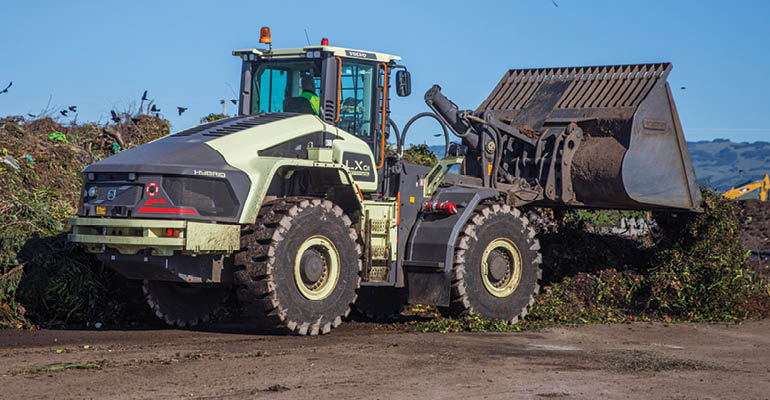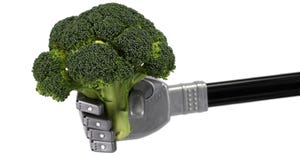
Volvo Construction Equipment (Volvo CE) presented field test results for its LX1 prototype electric hybrid wheel loader gathered from hundreds of hours of real work in two applications at Waste Management facilities in California.
CALSTART conducted emission tests on the machine and the California Energy Commission helped fund the LX1 project.
Testing began at the Redwood Landfill and Recycling Center, a green waste composting site in the northern part of the state. Both fuel efficiency and greenhouse gas emission tests were conducted at the facility and, although the data is still being analyzed, the results so far show an average improvement of 50 percent in fuel efficiency, equating to a reduction of 35 percent in fuel consumption and greenhouse gas emissions. The second test site was the Moreno Valley Transfer Station, a waste transfer site in southern California. Here, the LX1 achieved an average fuel efficiency improvement of around 45 percent. Both sets of results exceed the 35 percent fuel efficiency improvement target set for the project.
“We are pleased with the results from the field testing,” Scott Young, electromobility director at Volvo CE, said in a statement. “Although we’d already seen the LX1 reach up to a 50 percent improvement in fuel efficiency in our internal tests, every application and operator are different. Because of this, we were aiming for a 35 percent improvement in fuel efficiency in this project. But we are happy to say that we’ve significantly exceeded this figure and achieved similar results to those recorded at our test site in Sweden.”
Prior to testing the LX1, Waste Management ran a conventional machine at both sites to gather baseline data.
“Three experienced operators from Waste Management, who were trained and supported by Volvo CE engineers, carried out their daily work with the LX1 and provided us with valuable feedback,” Young said in a statement. “Their responses were positive, they liked the dramatic reduction in noise, improved visibility over the rear of the machine, ease of operation and powerful hydraulics. But they also gave us constructive feedback on areas we can refine, such as improving functions like traction control and gear shifting, actions that will enhance operability. Now we’ve concluded the field tests, the machine will be shipped back to Sweden for updates and tuning based on what we’ve learnt over the last six months. At this stage, the LX1 is still part of a development project and it is not commercially available.”
The California Energy Commission provided over $1.8 million of funding for the LX1 project through its Alternative and Renewable Fuel and Vehicle Technology Program. The program invests up to $100 million per year to support advancements in alternative, renewable fuels and the vehicles powered by them in California.
“The Energy Commission is pleased to invest in projects like the development and demonstration of Volvo’s LX1 electric hybrid wheel loader,” Energy Commissioner Janea A. Scott said in a statement. “Demonstrations like these help improve the viability of cleaner, less polluting technologies for near-term market adoption in California’s commercial goods movement, transit and other sectors.”
The LX1 is a series hybrid that incorporates a driveline that consists of electric drive motors mounted at the wheels, electric driven hydraulics, a battery energy storage system, a significantly smaller diesel engine and new machine architecture. It’s this combination that enables the substantial gain in fuel efficiency. As well as the improvement in fuel efficiency and reduction in emissions, the LX1 also offers a significant reduction in noise pollution compared to its conventional counterparts. The prototype – which has 98 percent new parts and a fundamentally new machine design – is capable of doing the work of a wheel loader that’s one size larger.
About the Author(s)
You May Also Like


